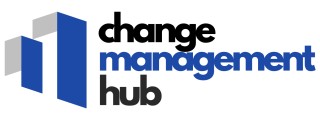
Understanding Talent Management System 2.0
Exploring the Evolution of Talent Management Systems
In today's rapidly evolving business landscape, organizations are increasingly turning to innovative solutions to streamline their talent management processes. One of the most significant developments in recent years is the adoption of Talent Management Systems (TMS 2.0). These systems have transformed the way companies approach key areas such as employee development, workforce planning, and performance management.
The latest iterations of talent management systems incorporate advanced analytics and data-driven insights, enabling businesses to make informed decisions about their workforce strategies. Companies can now leverage real-time data to enhance employee engagement and optimize talent acquisition and retention.
Key Features of Modern Talent Management Systems
Modern talent management systems offer a comprehensive suite of tools designed to support various aspects of human resources and talent planning. These features typically include:
- Recruitment and Onboarding: Streamlined processes for attracting and integrating new employees into the organization.
- Performance Management: Tools for setting goals, providing feedback, and measuring employee performance over time.
- Succession Planning: Strategic approaches to management succession and career development within the company.
- Learning and Development: Resources to promote ongoing employee learning and skills enhancement.
By embracing these features, businesses not only support their immediate talent needs but also fortify their long-term growth strategies.
To ensure successful adoption of these systems, organizations must also consider the critical role of change management. Implementing new software and processes can bring about significant challenges, which we will discuss later. Additionally, the importance of training personnel in the use of these systems cannot be overstated. For further insights on specialized training, explore our detailed guide on the role of trainers and facilitators in change management.
The Role of Change Management in Implementing New Systems
The Catalyst of Change for New System Integration
Implementing a new Talent Management System (TMS) can be a transformative journey for organizations aiming to refine their workforce dynamics. However, the success of such an initiative hinges on effective change management strategies. This phase acts as a catalyst, ensuring that the transition process is smooth and well-received by the workforce.
First, it's vital to comprehend that the primary objective is aligning the new system with the business's goals. By weaving in performance management and workforce planning, the TMS should ideally infuse agility and adaptability into the existing framework. This alignment not only prepares the ground for employee engagement but also sets a precedent for future advancements.
The implementation of a new system can be met with resistance, often rooted in fear of the unknown or disruption of established routines. Therefore, it’s crucial to communicate the value proposition of the new system thoroughly. Employees must understand how features like real-time feedback, goal setting, and career development planning can elevate their professional journeys.
Strategies for Overcoming Challenges
Providing training sessions and workshops can help demystify the TMS, reducing apprehension around its use. By emphasizing the advantages of the software, such as efficient management succession planning and dynamic succession planning, organizations can foster an environment of trust and willingness to adapt.
Engaging employees in unlocking the potential of specialized training materials can significantly ease the transition. Such resources can offer tailored insights and support, enabling individuals to navigate the new system with confidence and ease.
Moreover, open channels for employee feedback create a participative atmosphere where everyone feels their voices are heard, driving improved talent acquisition strategies and onboarding performance. Thus, promoting a culture of continuous learning and development paves the way for long-term success.
Identifying Challenges in System Implementation
Recognizing Potential Roadblocks
When implementing a talent management system (TMS) in an organization, various challenges can emerge. Identifying these potential roadblocks is critical for ensuring a smooth transition and successful integration.Resistance to Change
One of the most common hurdles in adopting new software systems is employee resistance. Changes to familiar processes, such as performance management or workforce planning, can create discomfort. Employees might fear that new systems, which often track real-time performance data, could impact their job security or alter established routines. Effective communication strategies and offering a free demo of the system to staff can help mitigate these concerns by providing a hands-on understanding of the new system.Technical Complexity and Compatibility
Introducing a new TMS often entails addressing technical issues, such as software compatibility and data integration. Companies need to ensure that their existing IT infrastructure can support the new system. Furthermore, integrating success factors, like sap successfactors and other existing solutions, into the new talent management software might complicate the process. Without seamless integration, data discrepancies may arise, affecting employee development and succession planning efforts.Resource Allocation and Investment
Implementing a new system requires significant resources in terms of time, money, and human capital. Adjusting workforce planning and business strategies to accommodate the change involves careful consideration and commitment from top management. Organizations must allocate resources effectively to cover training, onboarding performance initiatives, and ongoing support. For insights on optimizing resource allocation for effective change management, organizations can turn to expert-developed strategies.Communication Gaps
Efficient communication is essential throughout the transition phase. Miscommunication can exacerbate resistance and hinder buy-in from employees. Clear, consistent messaging detailing the benefits of the new system, such as enhanced employee engagement and improved talent management, will encourage staff to embrace the change. Additionally, establishing an open feedback loop ensures that concerns are addressed promptly, facilitating smoother adoption. By addressing these potential challenges proactively, businesses can effectively navigate the complexities of talent management software implementation, securing both short-term and long-term benefits for their organization.Strategies for Successful Adoption
Effective Strategies for Seamless Adoption
Successfully implementing a modern Talent Management System (TMS) involves more than simply deploying the software. Here are key strategies to ensure your organization embraces the change with minimum friction:- Comprehensive Training Programs: Employees must be equipped with the knowledge to navigate the new TMS efficiently. Implement learning development sessions that focus on both technical and practical usage, ensuring workforce engagement. This might include workshops on recruitment onboarding, talent acquisition, and performance management.
- Robust Communication Plan: Open and transparent communication is crucial. Maintain regular updates and incorporate feedback loops to ensure employees understand the benefits of the new system. This strategy fosters trust and mitigates resistance to change.
- Feedback Mechanisms: Establish a feedback process that allows employees to voice concerns and suggestions. This input can lead to meaningful adjustments and increased buy-in, ultimately enhancing system performance.
- Focus on Employee Development: Utilize the TMS as a tool for career development and succession planning. Encourage goal setting and skills enhancement by integrating features like real-time performance management and long-term workforce planning.
- Leadership Involvement: Having leadership actively involved in the transition process can significantly impact the success of adoption. Leaders can advocate for the change, guide planning efforts, and ensure that management succession aligns with business goals.
- Simulation and Piloting: Before a full rollout, conduct a pilot phase to test the system in a controlled environment. This can help identify potential challenges and areas of improvement, preventing major disruptions during full implementation.
- Data-Driven Insights: Use data insights from the TMS to continuously refine processes and strategies, ensuring alignment with organizational objectives.
- Utilizing Free Demo Opportunities: Offering employees a free demo of the TMS can ease anxiety and help them understand its features before full implementation.
Measuring Success and Impact
Key Metrics for Evaluating System Success
Assessing the success and impact of a modern talent management system is crucial in determining its effectiveness within organizations. By focusing on specific metrics, businesses can gain insights into the system’s performance and make informed decisions for both short and long-term strategies.- Employee Engagement: One primary indicator of success is the level of employee engagement. Positive engagement reflects a successful system in place, as engaged employees are more productive and satisfied with their roles. Conducting regular feedback surveys can provide valuable data on engagement levels.
- Performance Improvement: Monitor key performance indicators (KPIs) to gauge improvement in both individual and team performance. This can include metrics on goal setting achievements and onboarding performance, which demonstrate the system’s impact on employee development and performance management.
- Succession Planning Efficiency: Effective talent management involves identifying and preparing high-potential employees for leadership roles. Evaluate the time taken for management succession and the smoothness of the transition to determine the system’s success in succession planning.
- Talent Acquisition Success: Recruitment onboarding rates can serve as a metric for assessing how well the system supports talent acquisition processes. High success rates in recruitment onboarding suggest efficient processes and alignment with the organization’s talent needs.
- Workforce Planning Adaptability: Analyzing workforce planning capabilities provides insights into how adaptable the system is to changing business demands. The ability to make real-time adjustments in workforce planning goals is an indicator of a flexible and responsive management system.
Future Trends in Talent Management Systems
Emerging Patterns in Talent Management Systems
As organizations look to enhance their workforce dynamics, several emerging trends are shaping the future of Talent Management Systems (TMS). These developments show how crucial it is to adapt and innovate in the face of technological advancements and evolving employee expectations.
Firstly, there is a growing emphasis on data-driven decision-making. Businesses are leveraging advanced analytics and artificial intelligence to derive actionable insights from employee performance, skills, and engagement levels. This data-centric approach helps in accurate workforce planning and effective succession planning, ensuring that talent gaps are foreseen and addressed promptly.
Another key trend is the integration of real-time feedback mechanisms. Modern systems prioritize continuous feedback over traditional annual reviews, fostering a culture of ongoing employee development and engagement. This shift not only boosts individual performance but also aligns employees' career goals with organizational objectives.
Moreover, the focus on personalized learning and development paths is becoming more pronounced. Organizations are increasingly offering customized learning development opportunities to their workforce, tailored to individual career aspirations and skill requirements. This approach not only enhances employee satisfaction but also strengthens their commitment to the organization.
Finally, as businesses expand globally, scalable and adaptable TMS solutions are in high demand. Enterprises require systems that can handle diverse workforce needs and regulatory environments across different regions. As a result, TMS software providers are continuously innovating to offer more comprehensive and versatile solutions, such as enhanced recruitment onboarding tools and goal setting functionalities.
In conclusion, the future of talent management is evolving rapidly. Organizations must stay abreast of these trends to optimize their talent strategies effectively. A proactive approach will ensure they harness the full potential of their workforce, preparing them for both current demands and future challenges.













